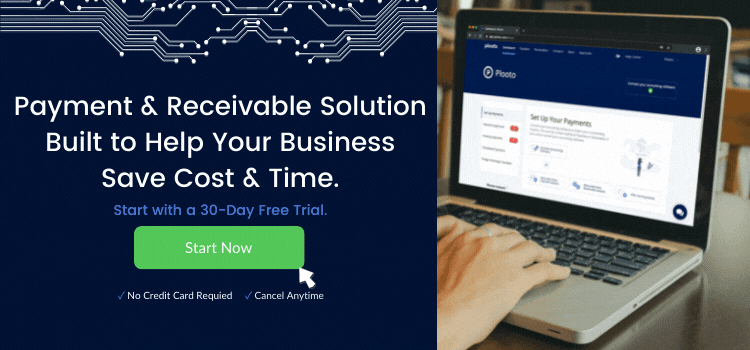
There are endless choices of products and services available in the market, and it is increasingly competitive for businesses to win the heart of customers proving the real value.
So how do we win in today’s market? Not just win but create big wins. The answer is in designing the best experience for your customers. Let’s have a deep dive and develop an understanding that can help your business.
Contents:
- What is design thinking?
- Why design thinking drives customer innovation?
- Three actionable ways you can start benefiting from design thinking tools today
- Learn how Plooto uses these tools to provide lasting value.
Design Thinking in a Nutshell
In essence, design thinking is a mindset- a way of thinking and approaching problems. It is evidence-based, with insights collected through research and talking to customers. It is data-driven and focused on testing to ensure assumptions are valid and accurate. It can be applied in many ways to accomplish two primary things:
- Solve problems
- Understand people
If you are not solving a problem, then it is not design thinking. This mindset is about solving real problems, big or small, and doing that through an iterative process. Empathizing with your customer is the most important thing you can do. Without it, you can’t understand your client’s needs, wants, and problems.
Design thinking is typically conducted in five phases:
1. Empathize
This phase is all about understanding your user. It typically involves desk research, talking to people, and getting an in-depth understanding of the potential problem areas. You want to ensure that you understand the why of your user’s problem to go past the superficial issues and solve deeper problems.
2. Define
Design thinking is all about solving problems, and you need to know what you are solving for. In this stage, you are identifying a problem statement based on the findings from stage one.
3. Ideate
Here your creativity can run free! In this phase, you can brainstorm all the possible solutions to the problem you are working on.
4. Prototype
This is where the vision meets reality. During prototyping, you can select a few ideas from stage three and build rough models to show your customer. The purpose is not to have a final product but get your solution out into the world.
5. Test & Validate
Time to test! Now you can take your prototype and show it to your customers. Get as much feedback as you can to see if your idea truly solves their problem.
Rinse and repeat! Design thinking is an iterative process, and you may go through this cycle or go back a few steps multiple times before arriving at the perfect solution. The key here is to involve your customer in all steps of the process.

Why Design Thinking Drives Customer Experience Innovation
Design thinking’s core attributes of understanding people and solving problems make it especially suited to drive customer experience innovation because a great customer experience starts when you know your customers and provide value to them. Design thinking provides the tools and mindset to explore what a customer’s needs are. If you understand what a customer’s needs are, then providing value becomes easy.
According to IDEO, “design thinking is a human-centered approach to innovation that draws from the designer’s toolkit to integrate the needs of people, the possibilities of technology, and the requirements for business success.”
Design a 5-star Customer Experience
By now, you must want actionable insight that will help you start designing a great customer experience. Here are three tools you can use today:
1. User Interviews
Know what your customers feel and what they think. Communicating with your customer is the number one thing you can do. User interviews can occur in various formats, such as in a more formal one-hour setting, impromptu by asking strangers on the street, or just asking your customer to interact with your product or service. The more you talk to your customer, the more you will understand what they need and value. User interviews are a foundation to inform the following two tools. Remember, design thinking is evidence-based, and you want to ensure your work is based on data.
2. Customer Persona
Persona mapping allows you to visualize your customer and serves as an excellent device to understand them. It is a fictional representation of your target customers that is always based on data. Any insights and information gathered from your user interviews will inform the qualities, goals, motivations, and problems your customer persona will visualize. Customer personas also serve as a tool for your team to remember whom they are solving a problem for and acts as an overview of everything you need to know about your customer.
3. Customer Journey Mapping
Journey maps visualize your user's process when experiencing their problem or when they are trying to achieve a goal. In essence, the journey map creates a timeline of user actions mapped with user thoughts and feelings. All these details on the timeline help you identify a narrative. This narrative will further understand the problem and serve as a foundation in communicating the value you can provide with your product or service. User interviews and customer personas also inform customer journey maps. By speaking with your customer and understanding their experience, you can map out what that looks like to identify specific problem areas.
How Plooto Uses Design Tools to Build a Great Customer Experience
Here at  , we are customer-centric. Customers are at the center of everything we do, from what features we design to how we serve our customers. We start every action with our customers in mind and work backward. If the value creation for the customer is unclear, we avoid it. Plootonians, employees at Plooto, are curious by nature and dive deep to understand the hows and whys. Being focused on our customers helps us understand them and their problems, which are core tenets of design thinking.
, we are customer-centric. Customers are at the center of everything we do, from what features we design to how we serve our customers. We start every action with our customers in mind and work backward. If the value creation for the customer is unclear, we avoid it. Plootonians, employees at Plooto, are curious by nature and dive deep to understand the hows and whys. Being focused on our customers helps us understand them and their problems, which are core tenets of design thinking.
Learning loops are a core part of how we operate - every endeavor, whether a win or loss, is all an opportunity to understand how we can do better. Creating alongside our customers helps us go through a learning loop faster. This iterative nature that is core to design thinking is how we like to build better. As we go through our learning loops, we collect data and use it to inform our choices. We provide value by using customer insights to make evidence-based decisions.
Our team conducts user interviews and visualizes the information on customer personas and journey maps to help us understand our customers and their needs. These tools allow us to continuously build for even better customer value.
Looking Ahead
As empathizing with your customer continues to be of greater importance and a key business differentiator, design thinking will become a staple practice in designing a five-star customer experience.













